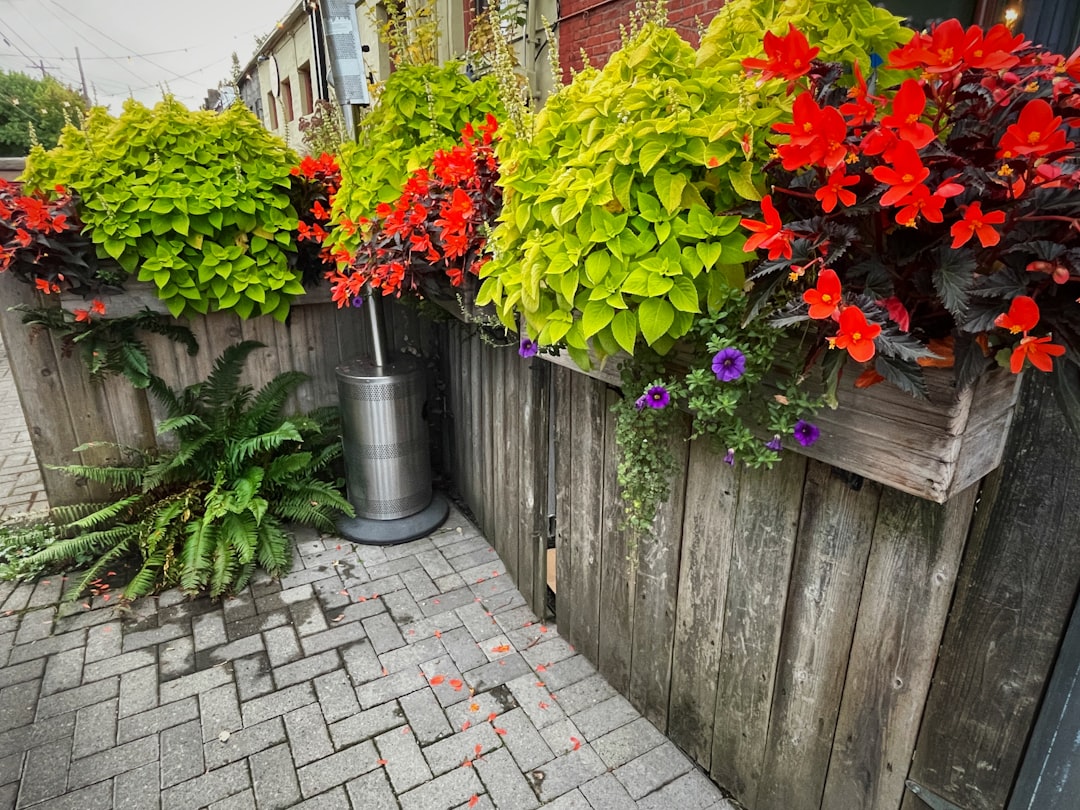Container Gardening: Growing Squash with Ease

Container gardening is a method of growing plants in containers rather than in the ground. It is a popular option for those who have limited space, such as apartment dwellers or those with small yards. Container gardening allows individuals to enjoy the benefits of gardening without the need for a large plot of land.
There are several benefits to container gardening. First and foremost, it allows individuals to grow plants in areas where traditional gardening is not possible. This includes balconies, patios, and even windowsills. Container gardening also provides more control over the growing environment, allowing for optimal conditions for plant growth. Additionally, container gardening can be less labor-intensive than traditional gardening, as it requires less weeding and maintenance.
Key Takeaways
- Container gardening is a great way to grow plants in small spaces.
- Growing squash in containers has many benefits, including saving space and reducing the risk of pests and diseases.
- When choosing a container for squash, make sure it is large enough and has good drainage.
- Squash needs well-draining soil and regular fertilization to thrive in containers.
- There are many varieties of squash that are well-suited for container gardening, so choose one that fits your needs and preferences.
Benefits of Growing Squash in Containers
Growing squash in containers offers several advantages. One of the main benefits is space-saving. Squash plants can take up a significant amount of space in a traditional garden, but when grown in containers, they can be placed in smaller areas such as patios or balconies. This makes it possible for individuals with limited space to enjoy the benefits of growing their own squash.
Another advantage of growing squash in containers is that it is relatively easy to maintain. Container-grown squash plants require less weeding and are less susceptible to soil-borne diseases compared to those grown in the ground. Additionally, container gardening allows for better control over watering and fertilizing, which can result in healthier plants and higher yields.
Container gardening also provides protection from pests and diseases. Squash plants are often targeted by pests such as squash bugs and vine borers, which can decimate a crop if left unchecked. By growing squash in containers, individuals can minimize the risk of pest infestations and easily monitor and control any issues that may arise.
Choosing the Right Container for Squash
When choosing a container for growing squash, there are several factors to consider. First and foremost, the container should be large enough to accommodate the root system of the squash plant. Squash plants have extensive root systems, so a container with a depth of at least 12 inches is recommended. The width of the container should also be considered, as squash plants can spread out and take up a significant amount of space.
In terms of material, there are several options available for containers. Plastic containers are lightweight and easy to move, but they may not provide adequate insulation for the roots during hot weather. Clay or ceramic containers are more aesthetically pleasing but can be heavy and prone to cracking. Fabric containers are a popular choice for growing squash as they provide good drainage and air circulation.
Drainage is an important consideration when choosing a container for squash. Squash plants require well-draining soil to prevent root rot, so the container should have drainage holes at the bottom. If using a container without drainage holes, it is important to create a layer of gravel or broken pottery at the bottom to allow excess water to escape.
Soil and Fertilizer Requirements for Squash
| Soil and Fertilizer Requirements for Squash | Optimal Range | Units |
|---|---|---|
| Soil pH | 6.0-6.8 | pH units |
| Organic Matter | 2-3% | % |
| Nitrogen | 50-100 | lbs/acre |
| Phosphorus | 50-80 | lbs/acre |
| Potassium | 100-150 | lbs/acre |
| Calcium | 1000-2000 | lbs/acre |
| Magnesium | 200-400 | lbs/acre |
Squash plants require well-draining soil with a pH level between 6.0 and 7.0. A mixture of potting soil and compost is recommended for growing squash in containers. This will provide the necessary nutrients and organic matter for healthy plant growth.
In terms of nutrient requirements, squash plants are heavy feeders and require regular fertilization. A balanced fertilizer with equal amounts of nitrogen, phosphorus, and potassium is recommended for squash plants. Fertilizer should be applied every two weeks during the growing season, following the instructions on the packaging.
Alternatively, organic fertilizers such as compost or well-rotted manure can be used to provide nutrients to squash plants. These organic options are beneficial as they improve soil structure and fertility over time.
Selecting the Perfect Squash Variety for Container Gardening
When selecting a squash variety for container gardening, it is important to consider the space requirements of the plant. There are two main types of squash varieties: bush and vining. Bush varieties are more compact and require less space, making them ideal for container gardening. Vining varieties, on the other hand, require more space as they tend to spread out and climb.
Another factor to consider when selecting a squash variety is the yield potential. Some varieties produce smaller fruits but have a higher yield, while others produce larger fruits but have a lower yield. It is important to choose a variety that suits your needs and preferences.
Watering and Sunlight Needs for Squash in Containers

Proper watering is essential for the success of container-grown squash plants. The soil should be kept consistently moist but not waterlogged. Overwatering can lead to root rot, while underwatering can result in stunted growth and poor fruit development.
The frequency of watering will depend on several factors, including the size of the container, the weather conditions, and the stage of growth of the plant. As a general rule, containers should be watered when the top inch of soil feels dry to the touch. It is important to water deeply, ensuring that the water reaches the bottom of the container.
Squash plants require full sun to thrive, so it is important to place the containers in an area that receives at least six hours of direct sunlight per day. If growing squash indoors, supplemental lighting may be necessary to provide adequate light for plant growth.
Temperature is another important consideration when growing squash in containers. Squash plants prefer warm temperatures between 70°F and 85°F. If temperatures drop below 50°F, it is advisable to bring the containers indoors or provide protection such as a frost blanket.
Pest and Disease Management for Squash in Containers
Squash plants are susceptible to a variety of pests and diseases, but growing them in containers can help minimize the risk. Common pests that can affect squash plants include squash bugs, vine borers, and aphids. These pests can be controlled by regularly inspecting the plants and removing any affected leaves or insects by hand. In severe cases, insecticidal soap or organic insecticides can be used.
Diseases such as powdery mildew and downy mildew can also affect squash plants. These diseases are caused by fungal pathogens and can be prevented by providing good air circulation and avoiding overhead watering. If a plant does become infected, it is important to remove and destroy the affected leaves to prevent the spread of the disease.
Organic pest control methods such as companion planting can also be used to deter pests. For example, planting marigolds or nasturtiums near squash plants can help repel pests such as aphids and squash bugs.
Harvesting and Storing Squash Grown in Containers
Knowing when to harvest squash is important to ensure optimal flavor and texture. Most varieties of summer squash are harvested when they are young and tender, usually when they reach 6 to 8 inches in length. Winter squash, on the other hand, is harvested when the fruits are fully mature and the skin is hard.
To harvest squash, use a sharp knife or pruning shears to cut the fruit from the vine, leaving a small stem attached. Be careful not to damage the vine or other fruits while harvesting.
Once harvested, summer squash can be stored in the refrigerator for up to a week. Winter squash should be cured for a week in a warm, dry location before being stored in a cool, dark place such as a basement or pantry. Proper storage conditions will help prolong the shelf life of the squash.
Tips for Successful Container Gardening of Squash
To ensure successful container gardening of squash, there are a few tips to keep in mind. First, proper container placement is important. Squash plants require full sun, so it is important to place the containers in an area that receives adequate sunlight. Additionally, containers should be placed on a stable surface to prevent tipping or damage.
Regular maintenance is also key to successful container gardening. This includes regular watering, fertilizing, and monitoring for pests and diseases. It is important to check the soil moisture regularly and adjust watering accordingly. Fertilizer should be applied according to the instructions on the packaging, and any signs of pests or diseases should be addressed promptly.
Companion planting can also be beneficial for container-grown squash. Planting herbs such as basil or dill near squash plants can help repel pests and improve overall plant health.
Enjoying the Fruits of Your Container Gardening Efforts
In conclusion, container gardening offers a convenient and space-saving way to grow squash. By choosing the right container, providing the proper soil and fertilizer, and ensuring adequate water and sunlight, individuals can successfully grow squash in containers. With proper pest and disease management, as well as regular maintenance, individuals can enjoy a bountiful harvest of fresh squash. So why not give container gardening a try and enjoy the fruits of your labor?
If you’re interested in growing squash in a container, you’ll definitely want to check out this informative article from Lawn World. They provide a step-by-step guide on how to successfully grow squash in a container, even if you have limited space. From choosing the right container to selecting the appropriate soil and providing proper care, this article covers it all. To learn more about growing squash in a container, click here: https://www.lawnworld.com/.
FAQs
What is squash?
Squash is a type of vegetable that belongs to the gourd family. It comes in different varieties, including summer squash and winter squash.
Can squash be grown in a container?
Yes, squash can be grown in a container as long as the container is large enough to accommodate the plant’s root system.
What type of container is best for growing squash?
A container that is at least 18 inches deep and 24 inches wide is best for growing squash. It should also have drainage holes to prevent waterlogging.
What type of soil is best for growing squash in a container?
A well-draining soil mix that is rich in organic matter is best for growing squash in a container. It should also have a pH level between 6.0 and 6.8.
How often should squash be watered when grown in a container?
Squash grown in a container should be watered regularly, at least once a day during hot weather. The soil should be kept moist but not waterlogged.
What type of fertilizer should be used for growing squash in a container?
A balanced fertilizer that is high in nitrogen, phosphorus, and potassium is best for growing squash in a container. It should be applied every two weeks during the growing season.
What pests and diseases should I watch out for when growing squash in a container?
Squash vine borers, squash bugs, and powdery mildew are common pests and diseases that can affect squash grown in a container. Regular monitoring and proper care can help prevent these issues.



